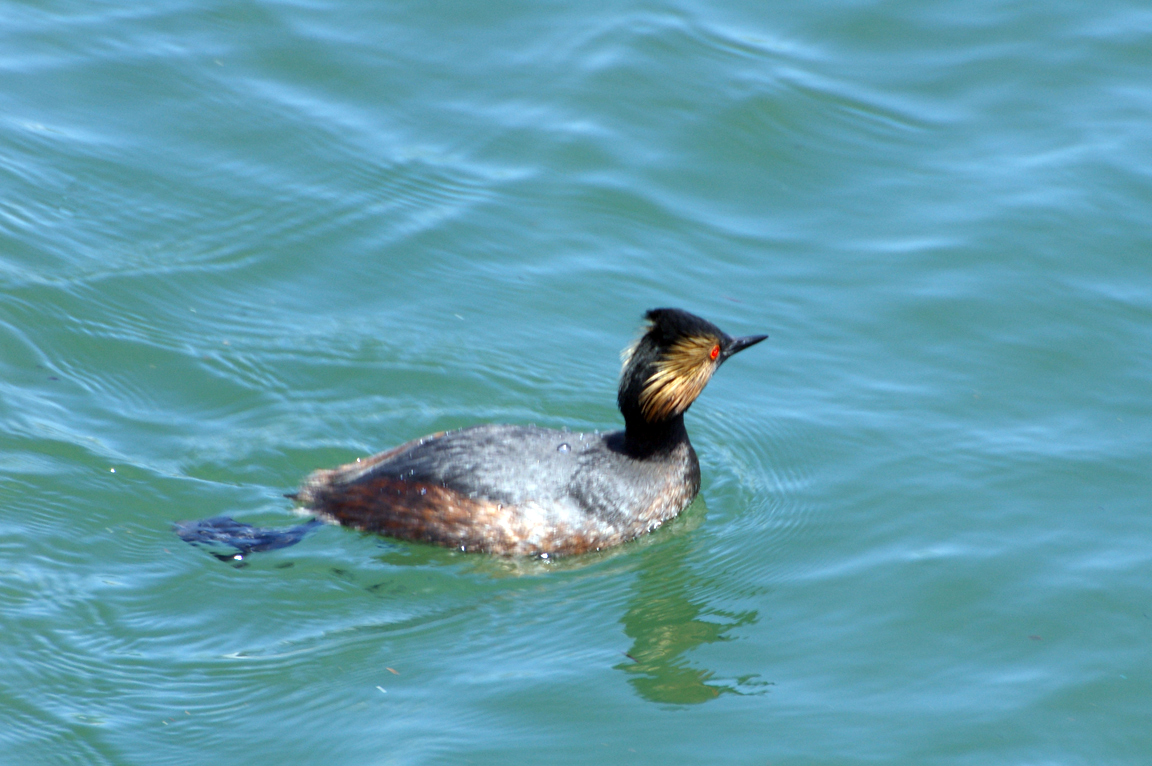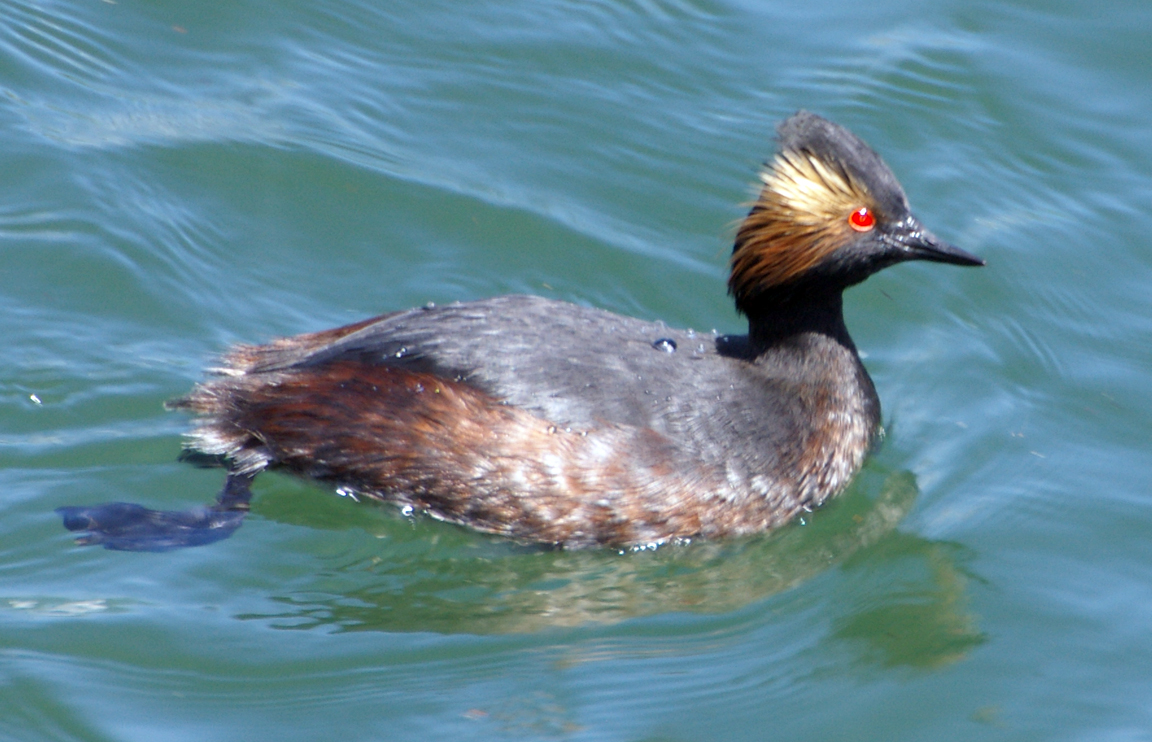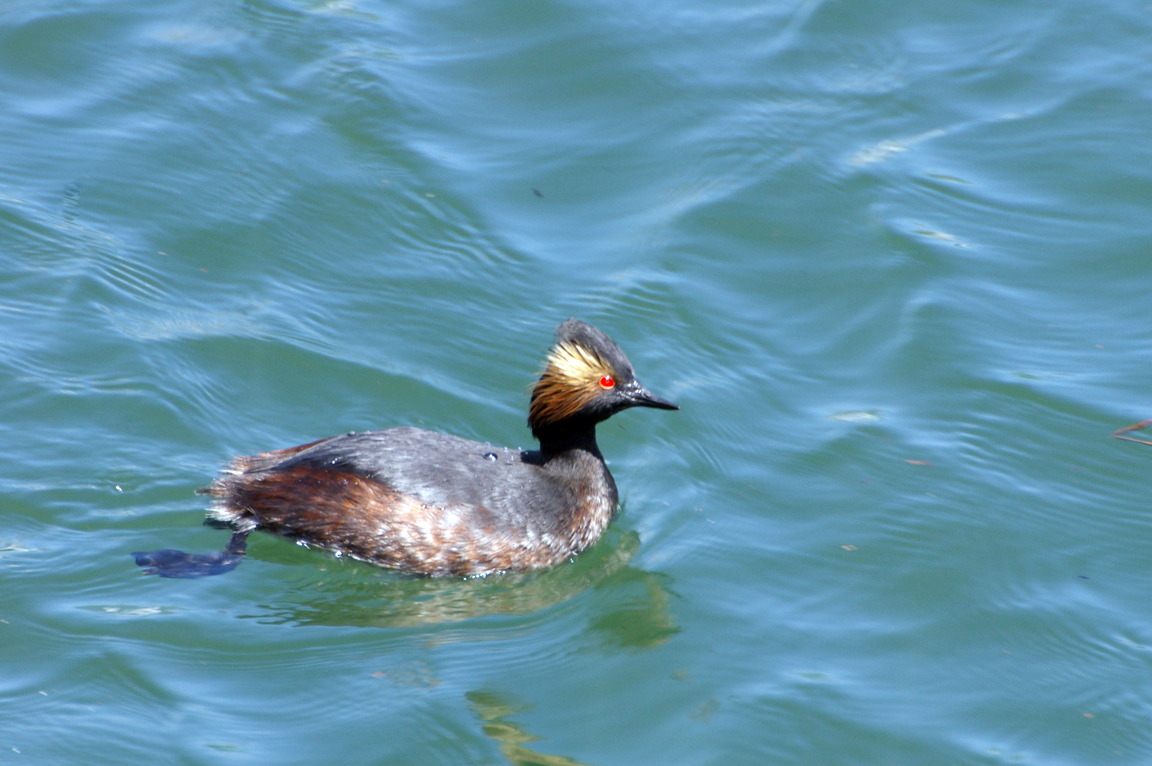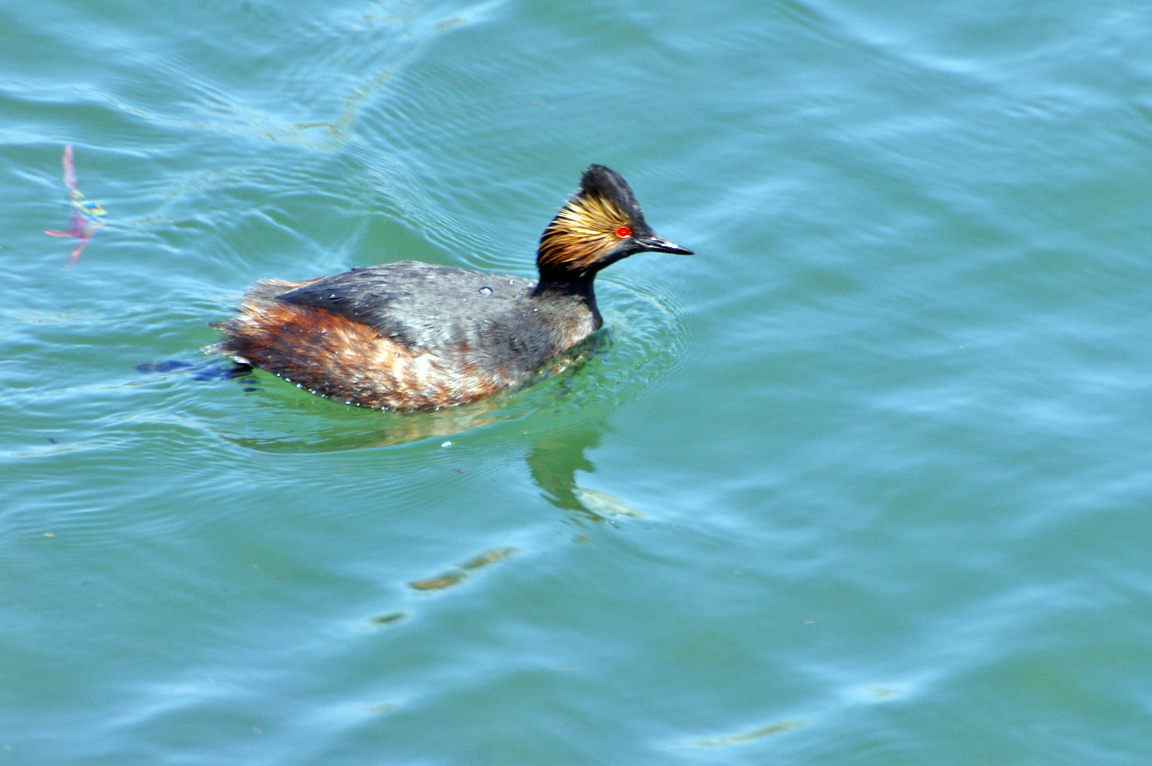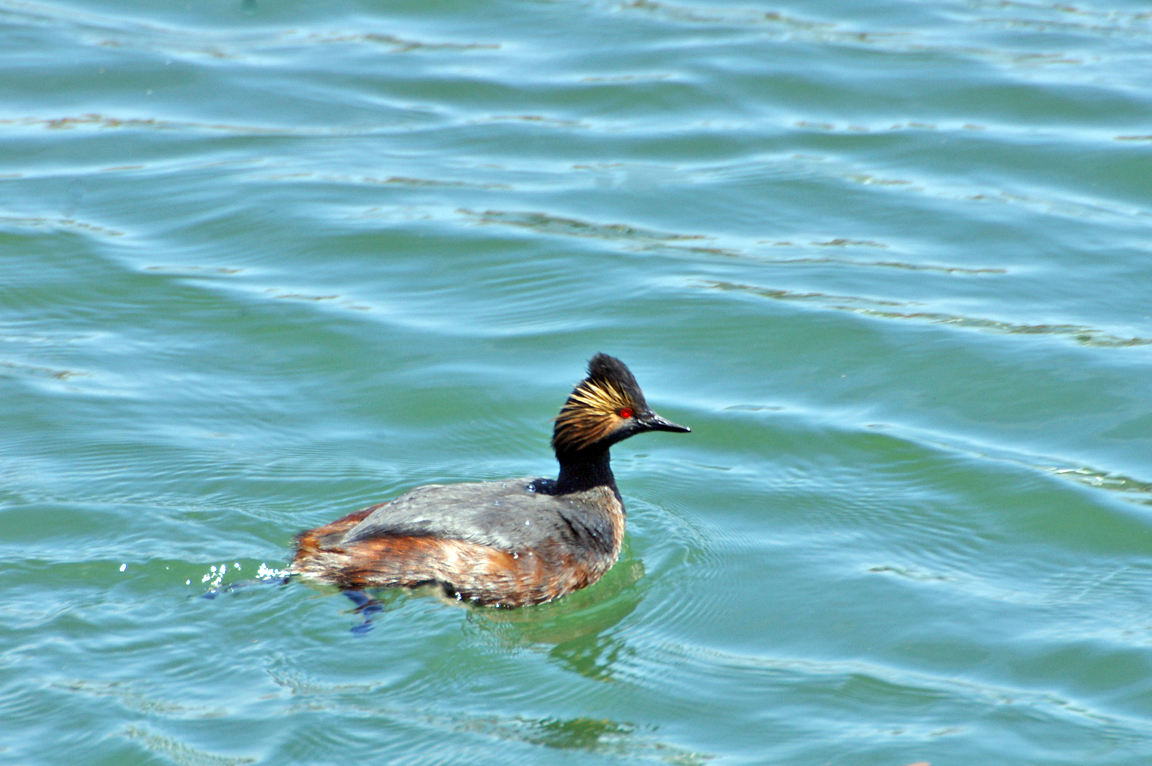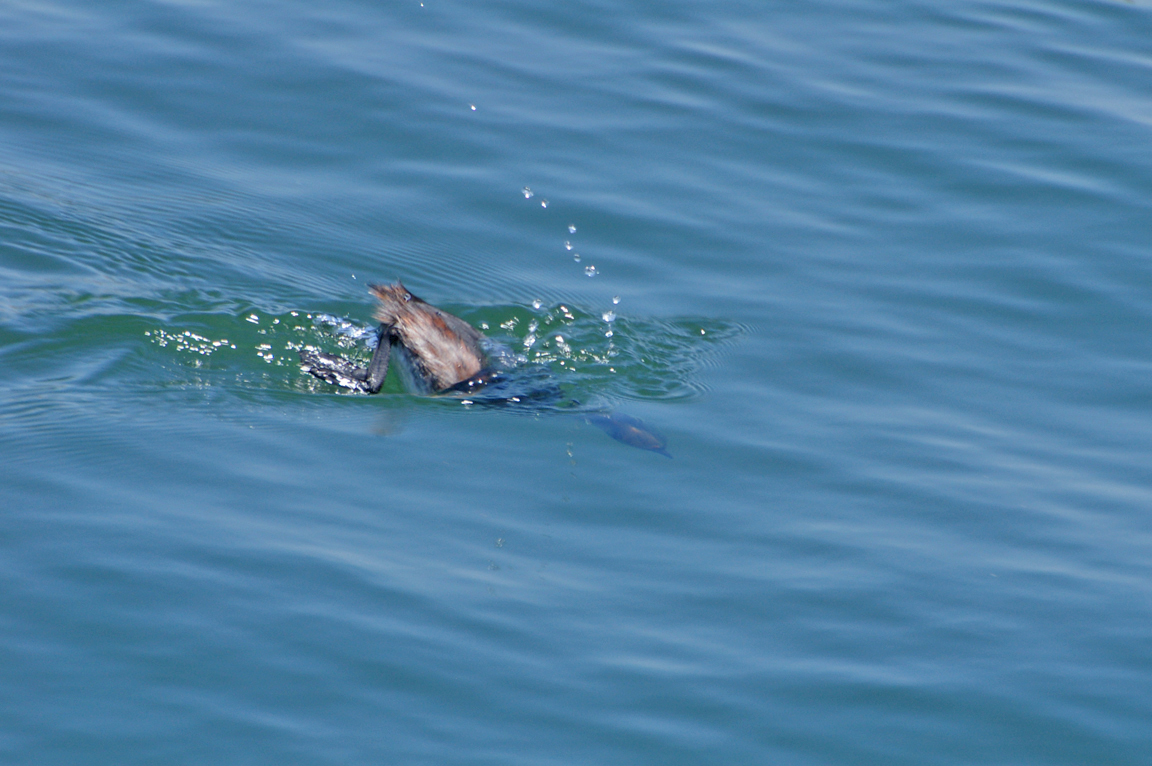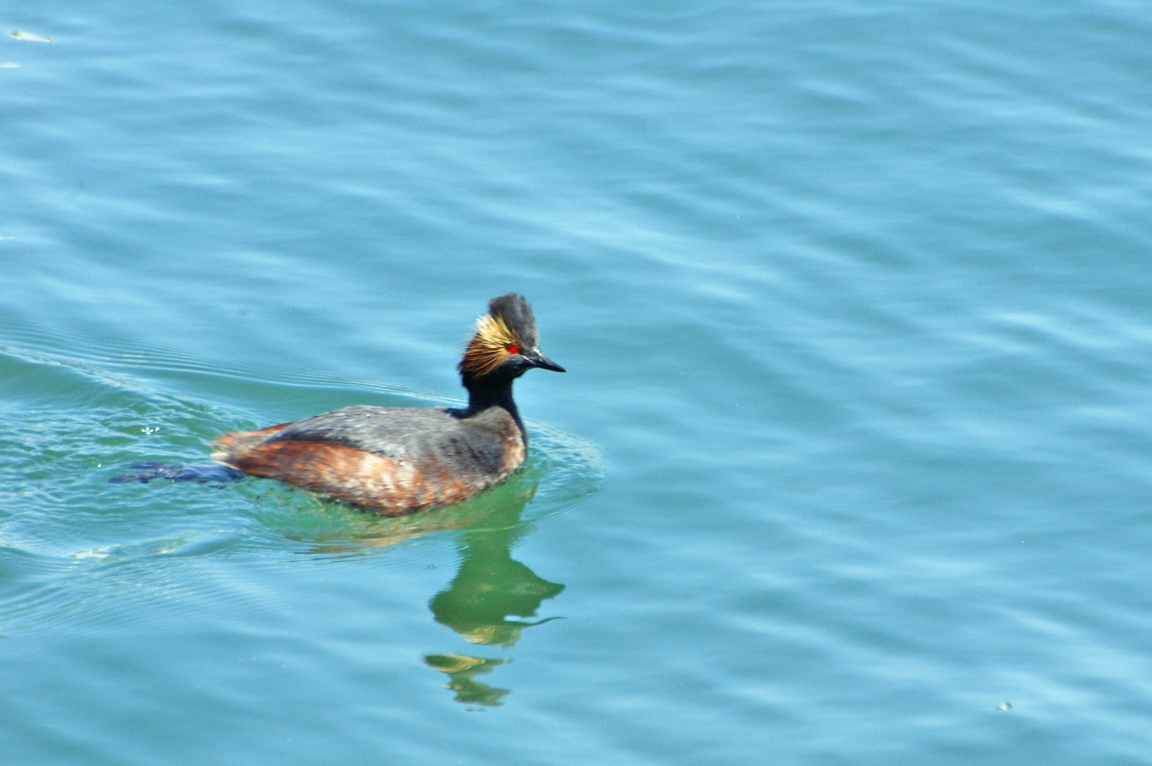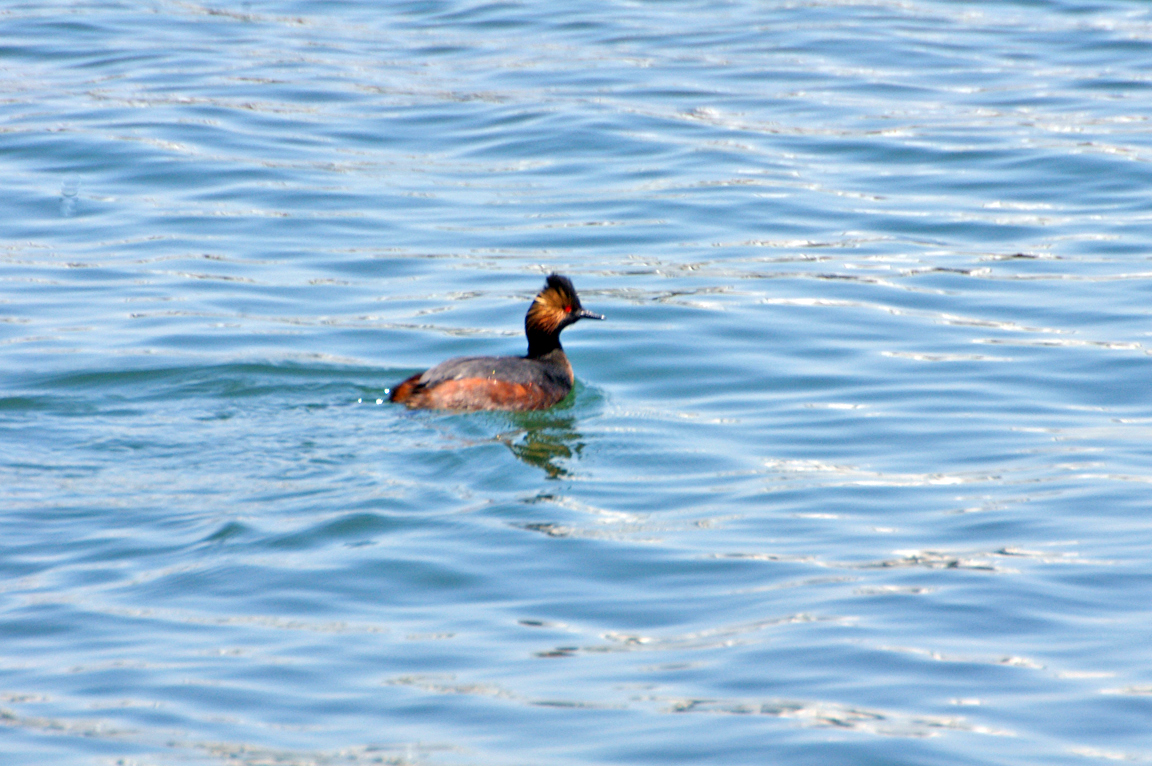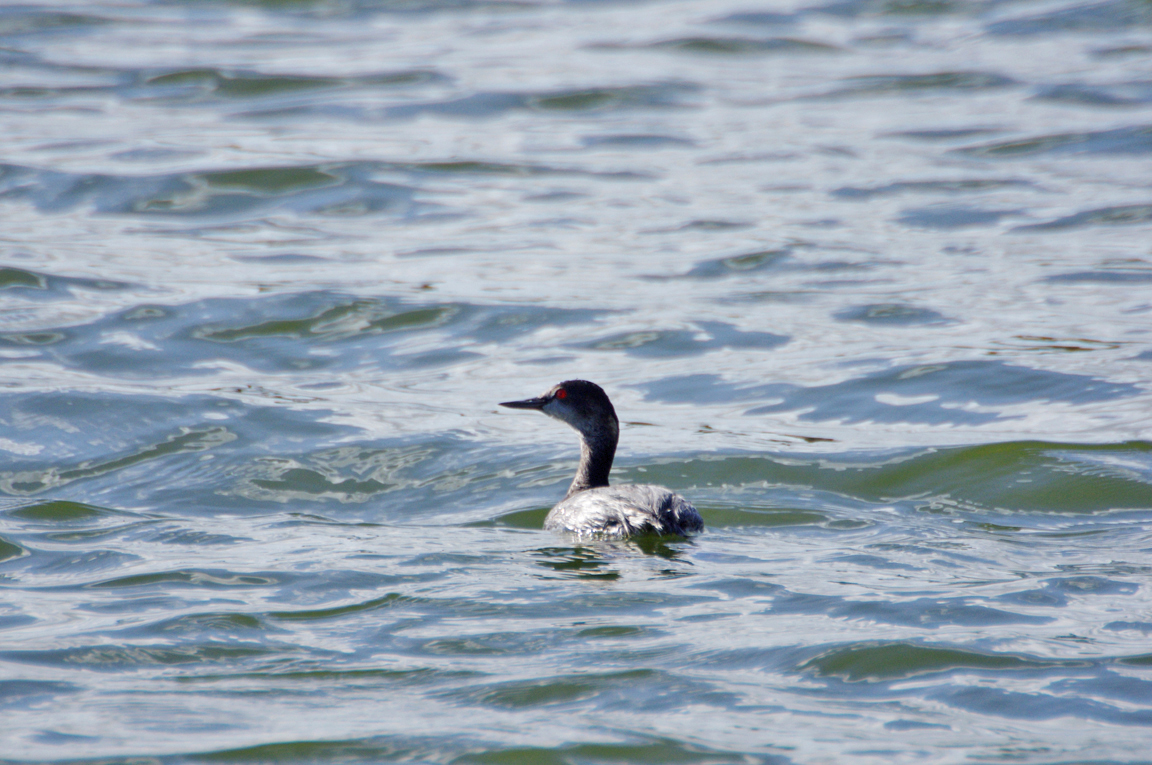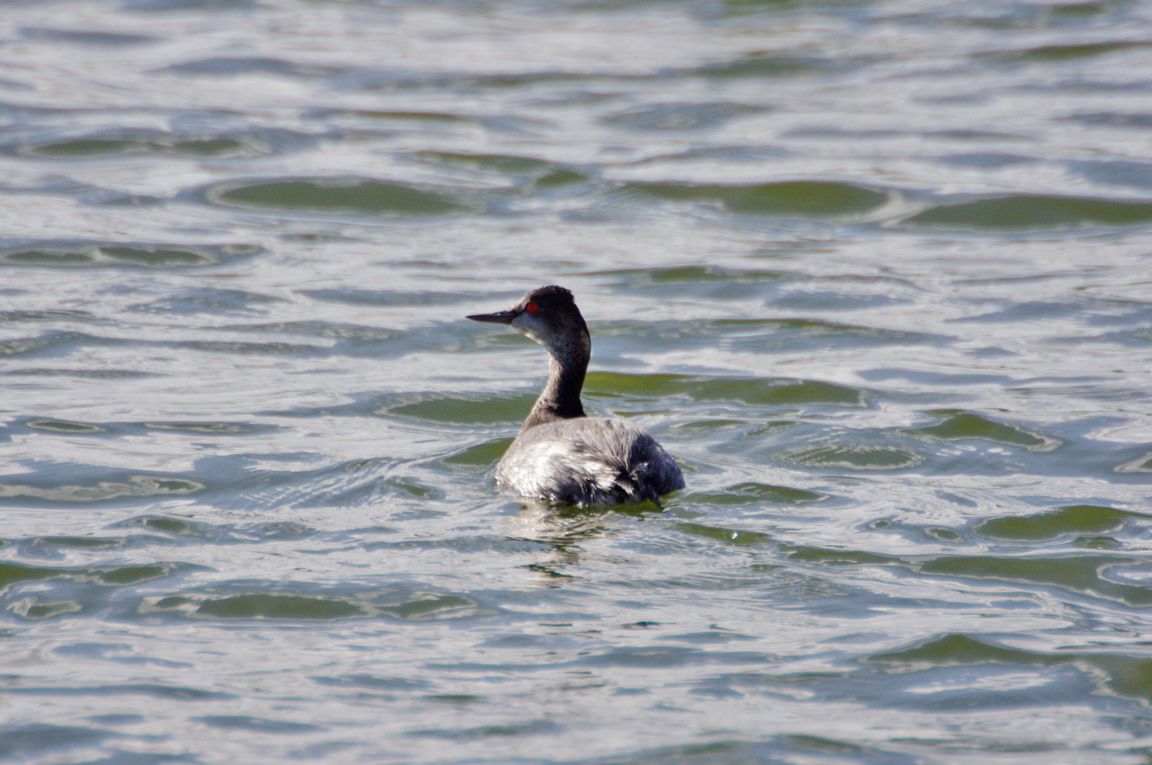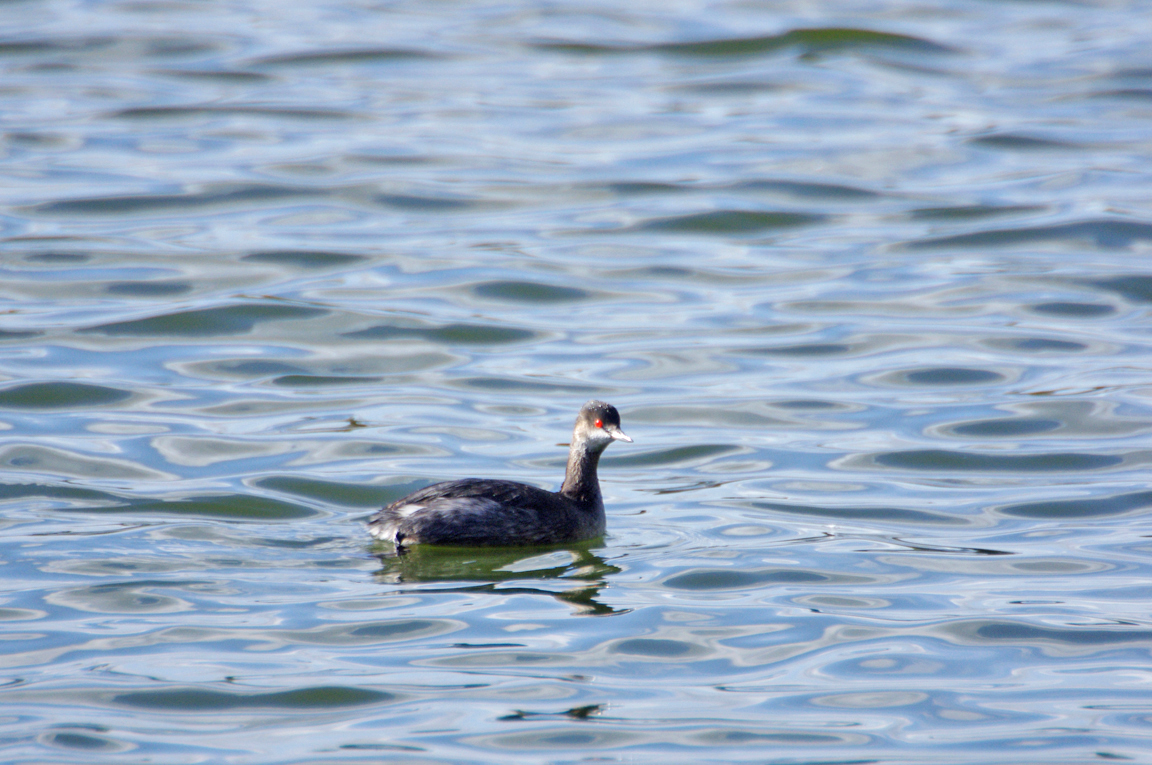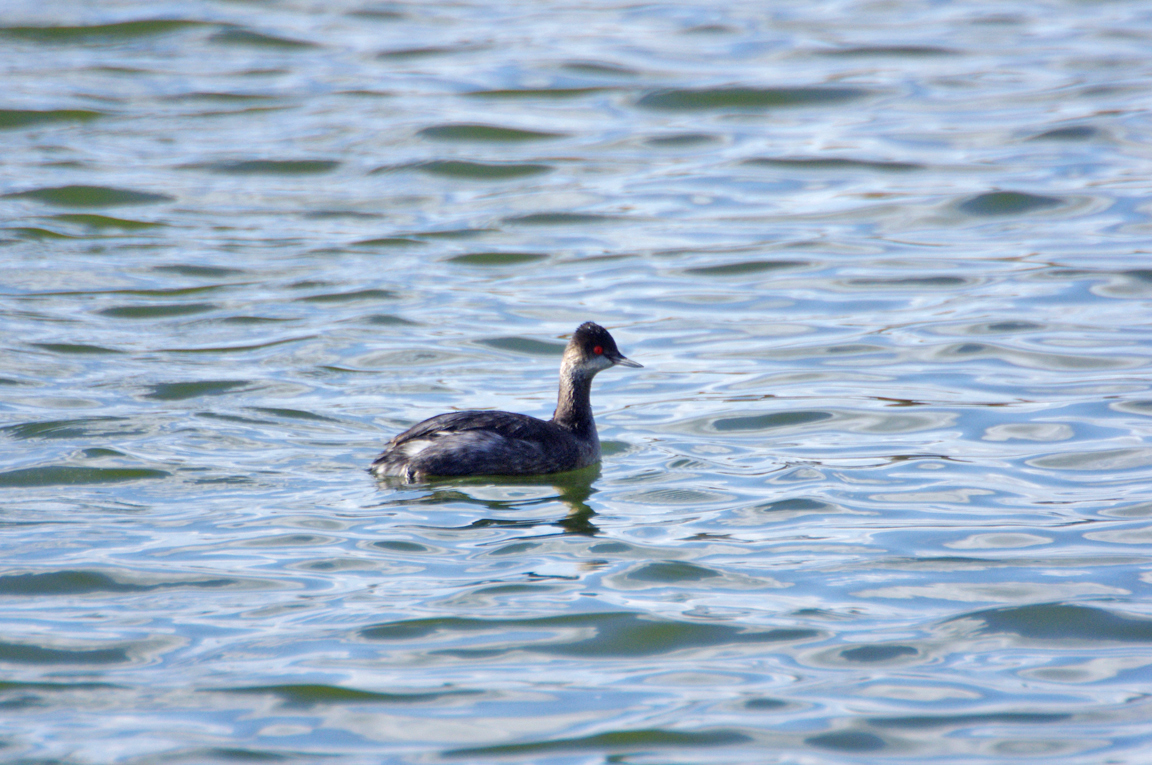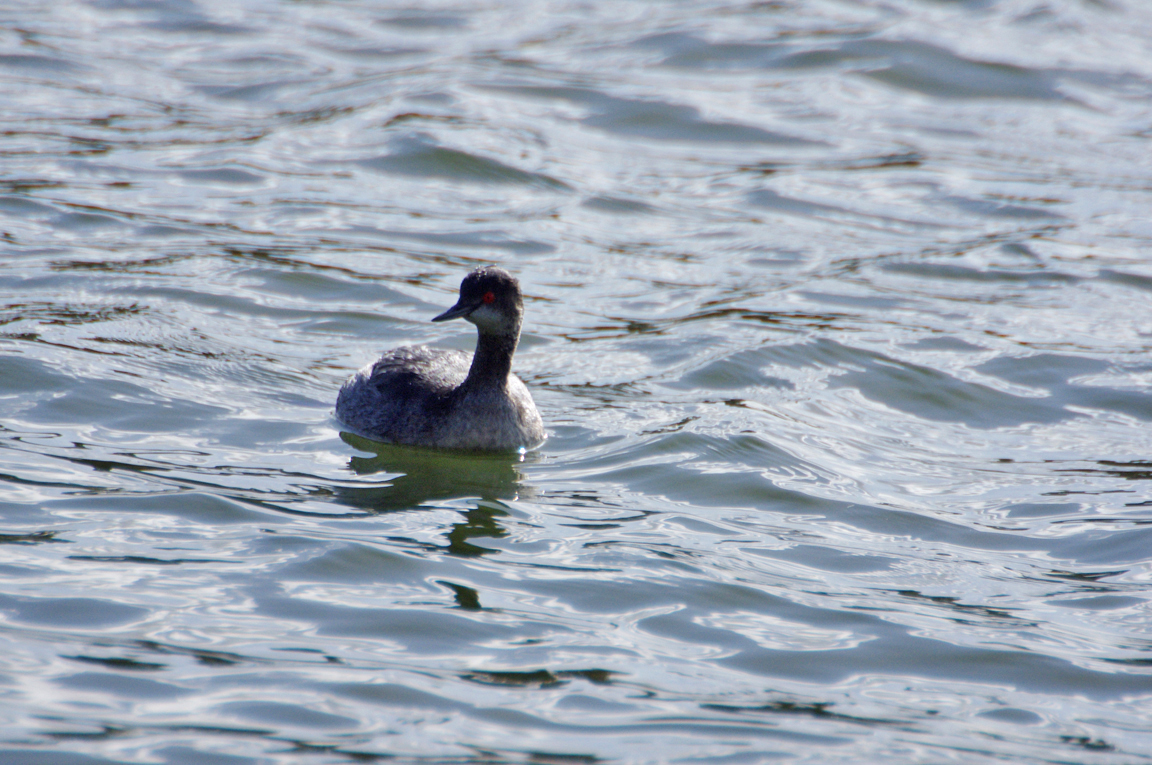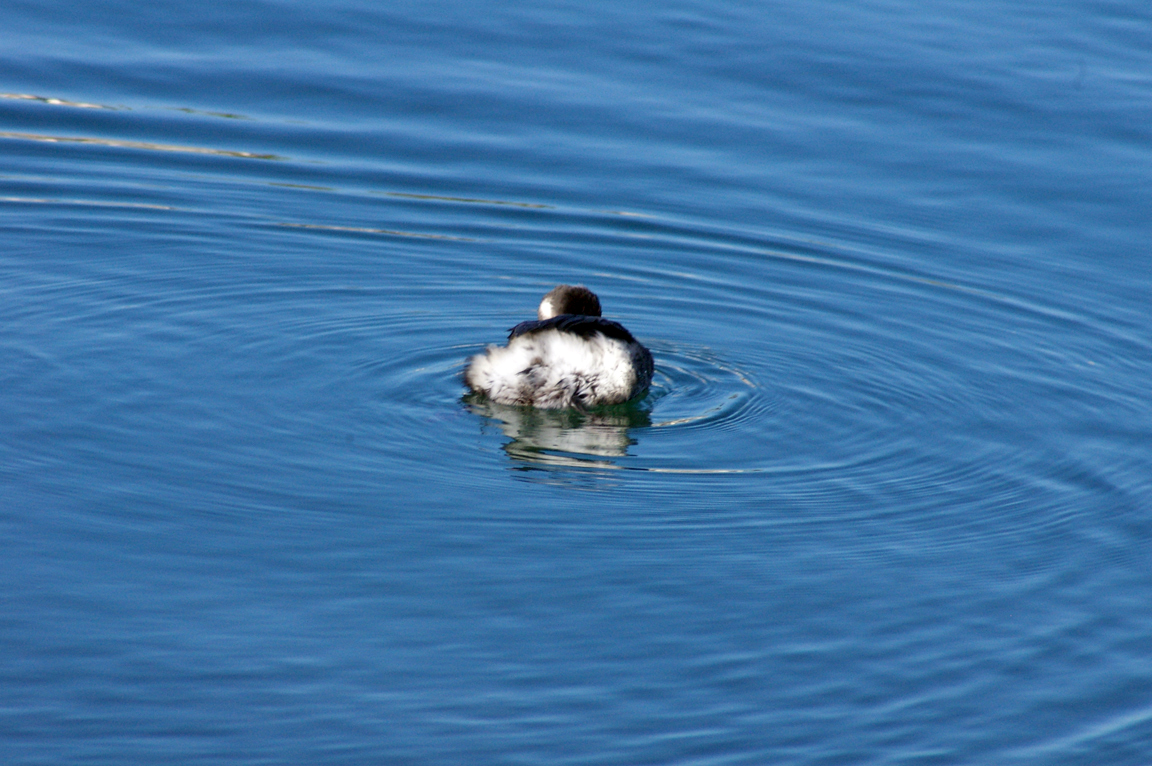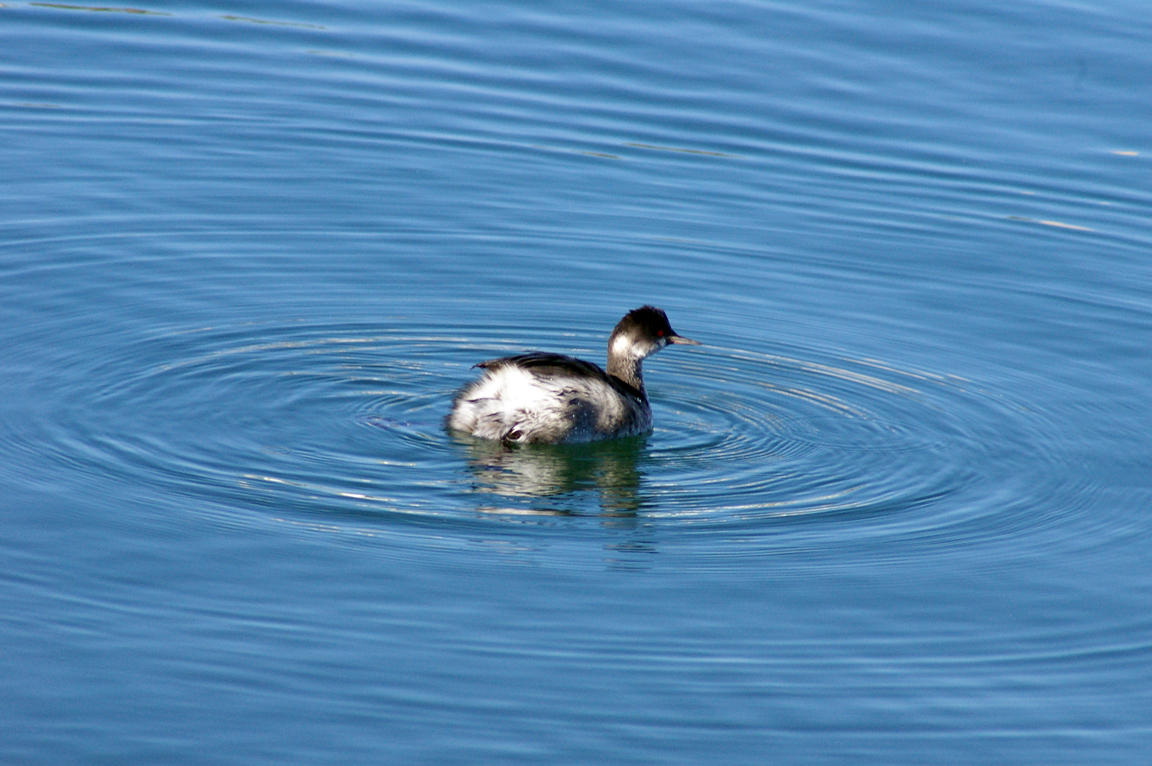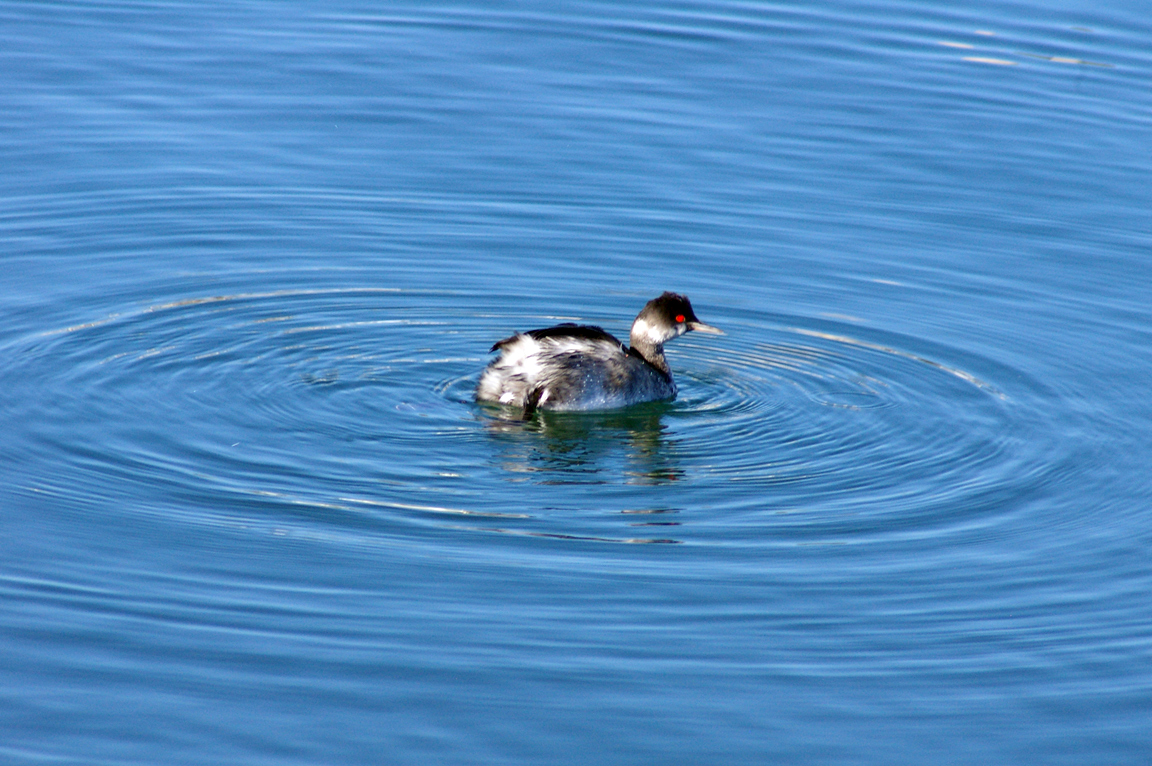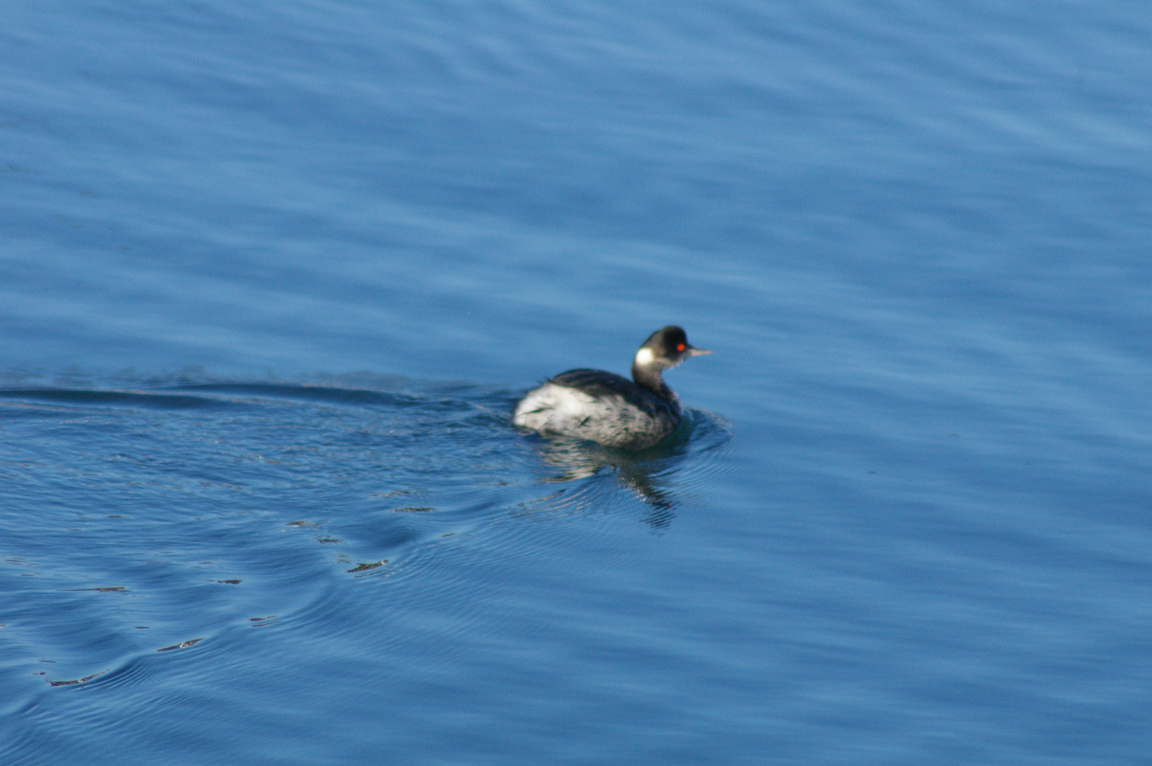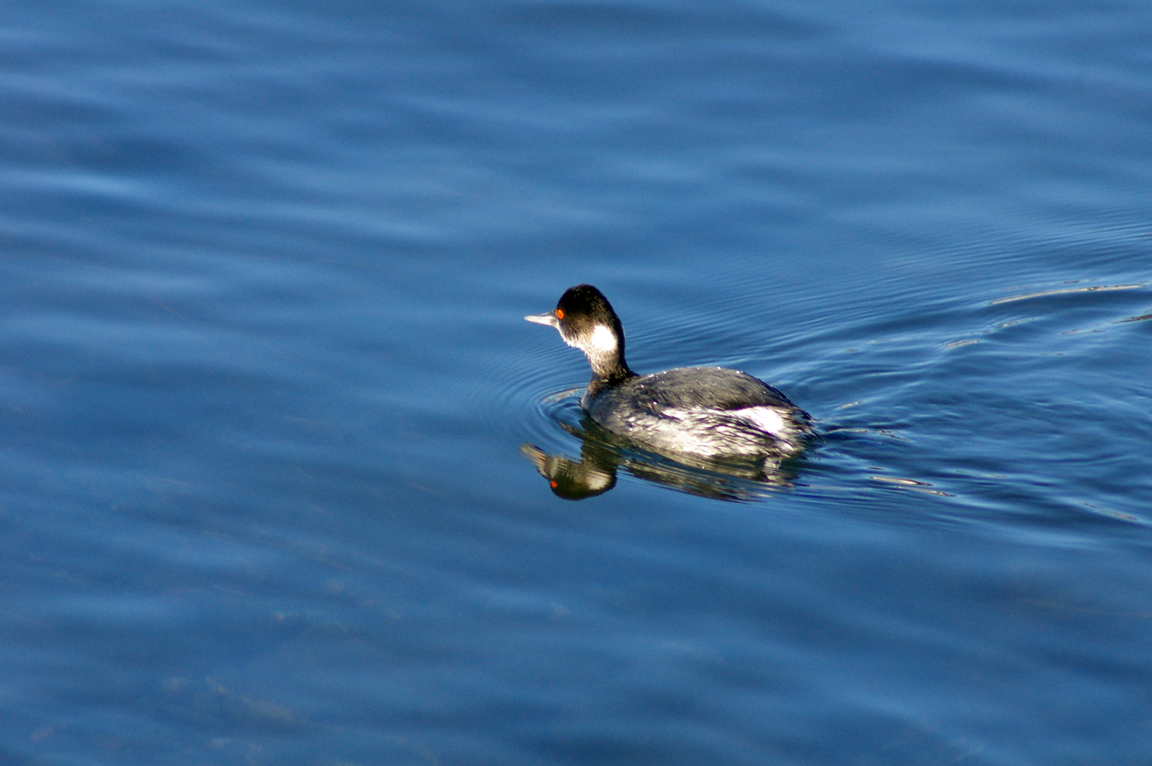|
|
|
 |
Eared Grebe
|
| Podiceps nigricollis | |
The most abundant grebe in the world, the Eared Grebe breeds in shallow wetlands in western North America. It occurs in greatest numbers on Mono Lake and the Great Salt Lake in fall, where it doubles its weight in preparation for a nonstop flight to its wintering grounds in the southwestern United States and Mexico.
Interesting Information
-
At its fall staging areas, the Eared Grebe more than doubles its weight. The pectoral (chest) muscles shrink to the point of flightlessness, the digestive organs grow significantly, and great fat deposits accumulate. Then before departure for migration, the digestive organs shrink back to about one-fourth their peak size and the heart and pectoral muscles grow quickly.
-
A cycle similar to that of the fall staging areas occurs three to six times each year for the Eared Grebe. For perhaps nine to ten months each year the species is flightless; this is the longest flightless period of any bird in the world capable of flight at all.
-
The Eared Grebe migrates only at night. Because of the length of its fall staging, its southward fall migration is the latest of any bird species in North America.
-
On cold, sunny mornings, the Eared Grebe, like some other grebe species, sunbathes by facing away from the sun and raising its rump, exposing dark underlying skin to light. This behavior may make the bird appear to have a distinctive "high-stern" profile.
Description
Adult Description
-
Size: 30-35 cm (12-14 in)
-
Wingspan: 52-55 cm (20-22 in)
-
Weight: 200-735 g (7.06-25.95 ounces)
-
Small waterbird.
-
Thin, dark bill, often appearing tilted slightly upward.
-
Red eyes.
-
In summer, black with golden ear tufts.
-
In winter, black, white, and gray, with white ear patch.
Sex Differences
Sexes similar.
Immature
Similar to winter adult, but more brownish on back and neck.
Breeding (Alternate) Plumage
Black head, neck, breast, and upperparts. Cinnamon flanks and white belly. Elongated yellow feathers extend back over ear area from behind eyes.
Nonbreeding (Basic) Plumage
Crown, nape, and upperparts black; sides, flanks, and front of neck grayish. Chin and throat white, with some white extending up behind dark ear areas. Head appears rounded in silhouette. Rear end rather high off water.
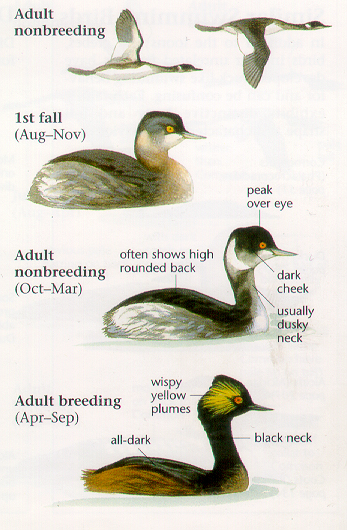
Photo taken from: The Sibley Field Guide by David Allen Sibley
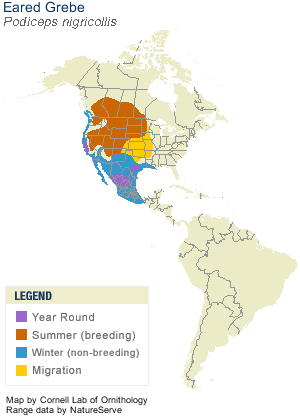
© 2003 Cornell Lab of Ornithology
|
Habitat |
|
Breeds in shallow lakes and ponds. In migration and in winter prefers salt water. Occurs in great numbers in super salty habitats, where fish are absent. |
|
Behavior |
|
Feeds at surface or by diving to the bottom. Researchers believe that the Eared Grebe uses its large, fleshy tongue much as baleen whales do, crushing prey against the palate and extruding water. |
|
Food |
|
Aquatic invertebrates, especially brine shrimp and brine flies. |
Taxonomy
| Kingdom: | Animalia |
| Phylum: | Chordata |
| Subphylum: | Vertebrata |
| Class: | Aves |
| Order: | Podicipediformes |
| Family: | Podicipedidae |
| Genus: | Podiceps |
| Species: | Podiceps nigricollis |
| Subspecies: | Podiceps nigricollis californicus |
| Podiceps nigricollis gurneyi | |
| Podiceps nigricollis nigricollis |
Similar Species |
Horned Grebe appears quite similar, especially in nonbreeding plumage, but shows clear border between black of crown and white of lower face rather than a more gradual transition between black and white. Front of neck is white, not gray. Rear end slopes to water instead of sticking up like that of Eared Grebe. |
|
Bird Sound |
|
Various trills and whirrs accompany courtship displays. Alarm call is a single sharp chirp. |
|
Eggs look like this |
|
Photo taken from: ARCTOS Collaborative Collection Management Solution |
|
Bird Sound |
|
Various trills and whirrs accompany courtship displays. Alarm call is a single sharp chirp. |
